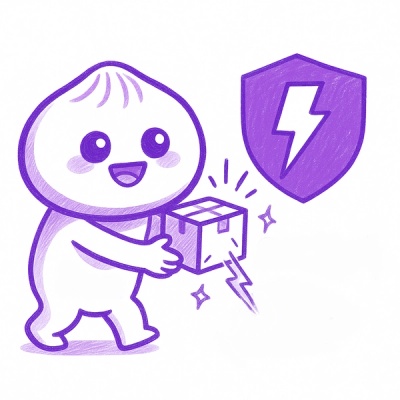
Research
/Security News
Weaponizing Discord for Command and Control Across npm, PyPI, and RubyGems.org
Socket researchers uncover how threat actors weaponize Discord across the npm, PyPI, and RubyGems ecosystems to exfiltrate sensitive data.
`dom-attach` is a simple, but batteries-included, library for attaching custom JavaScript / TypeScript logic to your DOM elements.
dom-attach is a simple, but batteries-included, library for attaching custom JavaScript / TypeScript logic to your DOM elements. It's inspired by libraries like Stimulus.js.
Install package:
# npm
npm install dom-attach
# yarn
yarn add dom-attach
# pnpm
pnpm install dom-attach
and then import dom-attach in your JavaScript / TypeScript code:
// ESM
import "dom-attach";
Alternatively, you can use the CDN version:
<script src="https://unpkg.com/dom-attach/dist/dom-attach.min.js"></script>
The concept is pretty straightforward. You define custom controllers as plain old JavaScript classes. A controllers constructor get's called whenever a controller gets mounted to a DOM element. The constructor receives the DOM element as it's only argument. You can then use the constructor to attach event listeners to the DOM element, or do whatever else you need to do. The controller class can also define a destroy method, which will be called whenever the controller is unmounted from the DOM element. This is useful for cleaning up event listeners, or other resources.
// hello-world-controller.js
export default class HelloWorldController {
constructor(element) {
this.element = element
}
connect() {
this.element.innerText = 'Hello world from inside the controller!'
}
}
<div data-controller="hello-world">This is the default content.</div>
<script
data-controller-name="hello-world"
src="hello-world-controller.js"
type="module"
></script>
You can also define inline controllers by inlining the controller class inside the <script data-controller-name="..."> tag. This is useful for small controllers, or for prototyping.
<div data-controller="hello-world">This is the default content.</div>
<script data-controller-name="hello-world" type="module">
export default class HelloWorldController {
constructor(element) {
this.element = element
}
connect() {
this.element.innerText = 'Hello world from inside the controller!'
}
}
</script>
A controller can define a connect method, which will be called whenever the controller is mounted to a DOM element. This is useful for attaching event listeners, or doing other setup work.
Optionally, a controller can define a destroy method, which will be called whenever the controller is unmounted from a DOM element. This is useful for cleaning up event listeners, or other resources.
ControllerYour controllers can (or should) also extend the Controller class, which provides some useful methods for interacting with the DOM element.
import { Controller } from 'dom-attach/controller'
export default class AnotherExampleController extends Controller {
// We can omit the constructor as it's defined in the base class.
connect() {
// Use all sorts of helper methods to interact with the DOM element.
}
}
| Name | Description | Type |
|---|---|---|
element | The DOM element the controller is mounted to. | HTMLElement |
dispatch(eventName, detail) | Dispatches a custom event on the DOM element. | (eventName: string, detail?: any) => void |
on(eventName, callback) | Adds an event listener to the DOM element. | (eventName: string, callback: EventListener) => void |
once(eventName, callback) | Adds an event listener to the DOM element, which will be removed after the first time it's called. | (eventName: string, callback: EventListener) => void |
off(eventName, callback) | Removes an event listener from the DOM element. | (eventName: string, callback: EventListener) => void |
corepack enablepnpm installpnpm devMade with 💜 by uberman
Published under MIT License.
v0.1.1
FAQs
`dom-attach` is a simple, but batteries-included, library for attaching custom JavaScript / TypeScript logic to your DOM elements.
We found that dom-attach demonstrated a not healthy version release cadence and project activity because the last version was released a year ago. It has 1 open source maintainer collaborating on the project.
Did you know?

Socket for GitHub automatically highlights issues in each pull request and monitors the health of all your open source dependencies. Discover the contents of your packages and block harmful activity before you install or update your dependencies.

Research
/Security News
Socket researchers uncover how threat actors weaponize Discord across the npm, PyPI, and RubyGems ecosystems to exfiltrate sensitive data.

Security News
Socket now integrates with Bun 1.3’s Security Scanner API to block risky packages at install time and enforce your organization’s policies in local dev and CI.

Research
The Socket Threat Research Team is tracking weekly intrusions into the npm registry that follow a repeatable adversarial playbook used by North Korean state-sponsored actors.